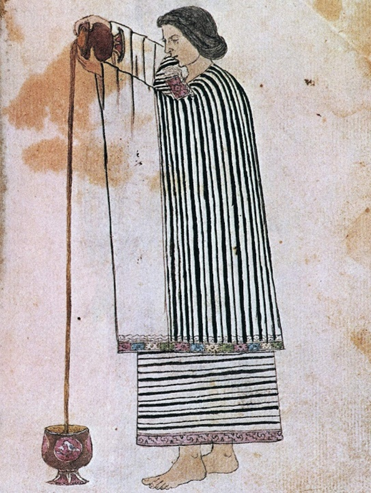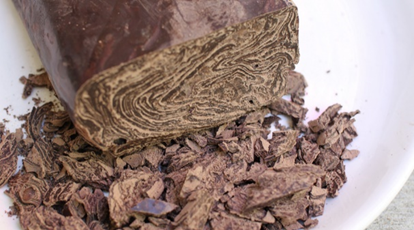Ceremonial Cacao - What exactly is it?
Posted by Charley's Chocolate on 3rd Nov 2022
The history of chocolate is long, dating back to
the Ancient Mayans. The word “chocolate” means “bitter water” which is a
description of the ritual drink prepared from fermented and roasted beans from
the chocolate tree. Archaeologists have found traces of cacao in pottery discovered
from an ancient ceremonial site in Ecuador, indicating ceremonial use for
chocolate began at least 5,300 years ago.

An Aztec woman is depicted preparing chocolate in this 1553 image.(Getty Images: De Agostini Picture Library)
What is ceremonial cacao?
Traditionally ceremonial cacao is 100% pure, organic whole bean, heirloom criollo nativo cacao (cacao chuncho) from Peru, but the more popular Theobroma (which Charley’s grows!) is widely used today. The whole cocoa bean is ground, nothing added, nothing taken away. When the cacao beans are ground, they form into a paste, also known as ‘cacao liquor’. The Mayans used the paste to create a frothy, hot and bitter drink, according to the following 2,000 year old recipe:
1. Mix the cacao paste with water
2 Add spices such as chilli peppers and cornmeal
3. Pour the concoction back and forth from cup to pot until it develops thick foam on top
4. Sweeten with honey or flower nectar.
Today ceremonial cacao is typically processed by the simplest method available: the fermented and dried cocoa beans are roasted at the gentlest temperature possible; the husks are removed from the nibs (sometimes even manually); the cocoa nibs are ground into a paste. The paste is then molded into a block that is ready to be used. The block is something close to regular 100% cacao chocolate, but without conching nor tempering.

Ritual use
In Mayan times, drinking chocolate was a very precious substance and, therefore, reserved for the elite. Cacao was prepared by priests for religious ceremonies and seeds were offered to the gods.
Marriages required the ceremonial use of cacao as it was believed to aid fertility and was also given for the birth of a child and was part of the baptism ceremony.
How Ceremonial Cacao is used today
Ceremonial
cacao is used in a variety of ways, for some as nothing more than a healthy
alternative to coffee or hot chocolate. Others
use it for meditation, healing, yoga, connection with others or oneself to name
a few. It is also used to sustain energy
lasting 4-5 hours and even as a mood booster – cacao is thought to be the only
food to release therapeutic levels of good feeling brain chemicals such as
serotonin, endorphins, dopamine and the “love chemical” phenylethylamine. Cacao
also can increase blood flow to the brain, body, and digestive system by up to
40%.

How to prepare:
The block of 100% cacao is first cut into thin shavings. These are put into a blender together with the preferred liquid – hot water, or milk of choice (usually plant-based). The cacao can also be prepared on the stove and whisked, it should never allowed to come to a boil, as this may cause the cocoa butter to split from the cocoa solids.
Spices like cayenne pepper, ginger and cardamom, and superfoods like maca powder and turmeric are added depending on the desired outcome for the ceremony (energising, relaxing, meditative). Sweeteners will tend to be more on the holistic side, like dates, agave, maple syrup or coconut sugar, avoiding all sorts of highly refined sugars.
Taste and texture
Charley’s favourite hot chocolate recipe is creamy, smooth and rich; ceremonial cacao has a totally different texture. Because the starting raw material is less refined, and usually many powders and spices are added, the consistency of ceremonial cacao is thick, grainy and dense. Many compare it to Turkish coffee. Preparing the cacao in a high speed blender can produce a smoother consistency.
The flavour of ceremonial cacao varies a lot based on the cacao origin and preparation process, together with all the added ingredients. It will typically not be as sweet or creamy as hot chocolate.
Sources:
https://www.abc.net.au/news/science/2018-10-30/ori...

